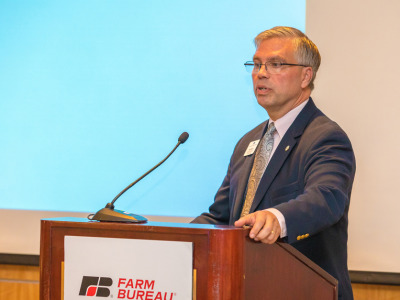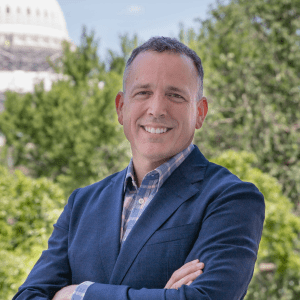Tom Vilsack is expected to have little trouble getting confirmed to another term as agriculture secretary. It's a good thing, because he'll have a lot to do the minute he walks in the door, starting with implementation of the COVID package just enacted.
Farm policy veterans say Vilsack will also be expected to move simultaneously on two of President-elect Joe Biden's top priorities: addressing climate change and racial injustice.
Vilsack also would likely move to reverse or halt some major regulatory actions by outgoing Ag Secretary Sonny Perdue, including rewriting a rule finalized in December that clarifies what constitutes “undue or unreasonable preference” in relationships between processors and producers.
In addition, Vilsack will likely want to expeditiously fill key positions in the department. The speed of that process will be determined by who controls the Senate. (As we publish Wednesday morning, Democrats gained one of two Senate seats in Georgia’s twin runoff elections and the second has yet to be called.)
The department's deputy secretary, who serves as USDA's chief operating officer, and the department’s eight undersecretaries must be confirmed by the Senate. That process could take months even though the Senate precedent no longer requires 60 votes to approve administrative nominations.
Dale Moore, who served as chief of staff for USDA during the George W. Bush administration, thinks Vilsack is likely to go ahead and appoint deputy undersecretaries and agency administrators without waiting to get undersecretaries confirmed.
"You're going to see deputy undersecretaries, deputy assistants, and the administrators, the special assistants, confidential assistants ... state FSA directors and Rural Development directors, and so forth. These folks are pretty much going to be in place, I think, before you get that much progress on your undersecretaries," said Moore, now executive vice president for the American Farm Bureau Federation.
While he's making those appointments Vilsack also will likely have to implement major aspects of the $900 billion COVID relief package, which includes $26 billion in agriculture and nutrition spending.

Dale Moore, Farm Bureau
Some of the provisions are relatively automatic, including a new round of the Coronavirus Food Assistance Program, and Perdue this week announced the Farmers to Families Food Box Program was being extended into 2021 with $1.5 billion from the new bill. Bill Northey, USDA's undersecretary for farm production and conservation, said Tuesday the department is working with the Biden transition team to ensure other payments can be made quickly after Biden and Vilsack take office.
"The things that are relatively straightforward, that don't require a lot of rule making but maybe a tweak or changing the date on something ... I think they are going to get those things rolling as soon as possible," said Moore.
But other provisions will almost certainly be left for Vilsack to act on, including potential compensation for biofuel producers and aid to contract poultry growers and hog producers that had to depopulate herds because of processing plant disruptions.
Biden and Vilsack have both made it clear climate policy will be a top concern of USDA's. Vilsack hasn't laid out any steps he plans to take yet. However, transition team members have raised the issue in meetings with industry leaders, and the transition team leader, Robert Bonnie, co-wrote a blueprint for the new secretary to follow. Bonnie's plan, contained in a longer set of recommendations written by veterans of the Obama administration, includes proposals to use USDA's Commodity Credit Corp. account to buy and sell agricultural carbon credits.
The plan also calls for a review of the crop insurance program to see how it can be used to incentivize climate friendly practices.
"We know that they want to try to move quickly on climate issues. We know that a lot will require the Hill's participation, but it's pretty clear that they also want to quickly look to see what existing authority they have to be able to make some administrative changes there as well," said Rob Larew, president of the National Farmers Union.
Members of the transition team “have not really shed any light on exactly what they want to do” on the climate issue but have indicated they are studying how they can use the department’s existing legal authority to address the subject, Larew said.
Vilsack will have a significant advantage in that not only does he already know how USDA works, but he also has an understanding of how to work with the White House, Environmental Protection Agency and other departments on climate policy and issues such as biofuels, said Larew.
“He knows that if we're talking about climate or if we're talking biofuels what kind of relationship USDA is going to need to have. That's been a problem from time to time, I don't care which administration you're talking about,” Larew said.
Vilsack's experience since 2017 as president and CEO of the U.S. Dairy Export Council also means he has stayed directly involved with other commodity groups on a range of key issues facing agriculture, from trade to climate policy. He already knows where those groups stand on policy without needing to ask.
Interested in more coverage and insights? Receive a free month of Agri-Pulse West.
"Make no mistake, on the trade front and on so many other fronts, he was very much a part of the backroom discussions on how do we convince the Trump administration to do X, Y or Z," said Moore.
The “undue preference” rule, which groups including the NFU and National Sustainable Agriculture Coalition want Vilsack to rewrite, is one of several regulations that he will have a chance to address.
Another that will be waiting for him is a rule tightening care standards for poultry and livestock. The Organic Trade Association has been battling the Trump administration in court over Perdue’s withdrawal of the rule that was finalized in the last days of the Obama administration, and OTA recently won a delay in the case to allow the incoming administration to take over the litigation.
A second rule that OTA wants Vilsack to finalize would prevent livestock producers from moving animals in and out of organic production.

Rob Larew, National Farmers Union
A series of rules Perdue rolled out to tighten eligibility requirements or change benefit calculations for the Supplemental Nutrition Assistance Program would also almost certainly be targeted by the new administration, starting with one that would make it harder for states to get waivers from SNAP work requirements. A federal judge vacated the rule last fall.
Less clear is whether Vilsack will undertake a new reorganization of the department or undo some of the changes that Perdue made, including his relocation of the Economic Research Service and National Institute of Food and Agriculture to Kansas City, Mo. As part of a reorganization of the USDA management structure, the Natural Resources Conservation Service was moved into a new farm production and conservation mission area now overseen by Northey. The Packers and Stockyards Administration was folded into the Agricultural Marketing Service.
The ERS and NIFA relocations received most of the criticism. Larew said Vilsack will need to rebuild confidence of ERS and NIFA personnel in USDA leadership.
For more news, go to www.Agri-Pulse.com.


